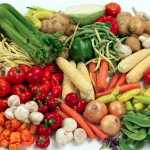A healthy diet must include dietary fats as a necessary component. However, their creation has an effect on the ecosystem and our ability to survive in it. Our grasp of the connections between food, health, and sustainability has improved as a result of growing knowledge across many fields, but seeming complexity has increased. While previous dietary recommendations set limitations on overall fat intake, particularly saturated fats, recent research suggests more nuanced relationships between fat and health. There are different recommendations for areas with obesity as a growing issue vs areas with overall poverty and malnutrition. Limited data and common social objectives prevent production from being optimized to improve health and environmental results. We don’t have a complete picture of where fats are created and how they affect the ecosystem. Additionally, the acreage requirements for supplying the demand for oil vary substantially depending on the yields of the various crops used for making oils or feeding animals. We examine recent debate on the nutritional benefits of edible fats, highlight the presumed environmental effects of their production, and pinpoint knowledge gaps in order to shed light on these issues.
Various dietary fats
Four forms of fat dominate human diets:
Many foods naturally contain saturated fats. Because they are often solid at room temperature, they are frequently referred to as solid fats. The majority are derived from animal sources, however some oils derived from plants have high saturated fat content.
Saturated fat can be found in the following foods:
- Beef
- Pork
- Chicken with skin
- Lamb
- Cream
- Butter
- Lard
- Cheese
- (Whole, 2%) Milk
- Icy dessert
- a baked good
- Fried food
- palm oil
- Cocoa butter
Some foods naturally contain trans fats, however the majority are found in processed meals. When hydrogen is added to vegetable oils to make them more solid, artificial trans fats are created. Partial hydrogenation is the name of the procedure.
Trans fats are used by some food manufacturers because they are convenient, affordable, and durable. Trans fats also impart a pleasing flavor and texture to meals. Because trans fats may be used repeatedly in deep fryers, fast food businesses frequently use them.
Trans fat content in packaged foods is not always obvious. As long as there are fewer than 0.5 grams of trans fats per serving, foods can be listed on nutrition facts panels as having “0 grams of trans fats.” However, you may identify trans fats by scanning the ingredients list for “partially hydrogenated oils.” Trans fats are included in all packaged foods that use partially hydrogenated oils.
Trans fats can be found in the following foods:
- Fried food
- Doughnuts
- a baked good
- Cakes
- tart crusts
- Biscuits
- iced pizza
- Cookies
- Crackers
- microwave popcorn
- Margarine in sticks
- Icings
Normally liquid at normal temperature, unsaturated fats begin to solidify when cold. Unsaturated fatty acids come in two varieties:
Many foods and oils made from plants contain monounsaturated fats, such as:
- Almond oil
- rapeseed oil
- Almond oil
- Oil of safflower
- soybean oil
- Avocados
- Almond butter
- seeds and nuts
Most plant-based foods and oils contain polyunsaturated fats, such as:
- soybeans as well as soybean oil
- grain oil
- safflower oil
- Walnuts
- kernels of sunflower
- Tofu
What amount of fat should you consume per day?
The American Heart Association advises persons in good health to keep their daily dietary fat intake between 20 and 35 percent of total calories.
How much saturated fat should I consume daily?
The American Heart Association advises healthy persons to reduce their consumption of saturated fats and opt for healthier alternatives.
Things to think about
You are not required to eliminate all fat from your diet. But you ought to restrict how much fat you consume. Every gram of fat contains 9 calories. This is more than twice as many calories as those in proteins and carbs. Each of them contains 4 calories per gram.
Try to consume foods high in omega-3 fatty acids and unsaturated fats. Steer clear of foods that are high in trans and saturated fats.
Other advice is:
- Skip the fast food. Trans fats are virtually always present in it.
- Skip the fried meals.
- Reduce your consumption of red meat. Eat proteins made from fish, poultry, and vegetables instead.
- Canola oil should be used when baking.
- When you cook, use olive oil. Additionally, you can spread it on bread and substitute it for salad dressing.
- Make better snack decisions. Consider substituting a tiny handful of edamame (soybeans) or unsalted peanuts for a few potato chips.
- Put some avocado on your salad or in your sandwich. Salads are also a wonderful place for nuts and garbanzo beans.
- Instead of butter, use liquid or soft tub margarine. Look for margarine that contains little or no trans fat.






